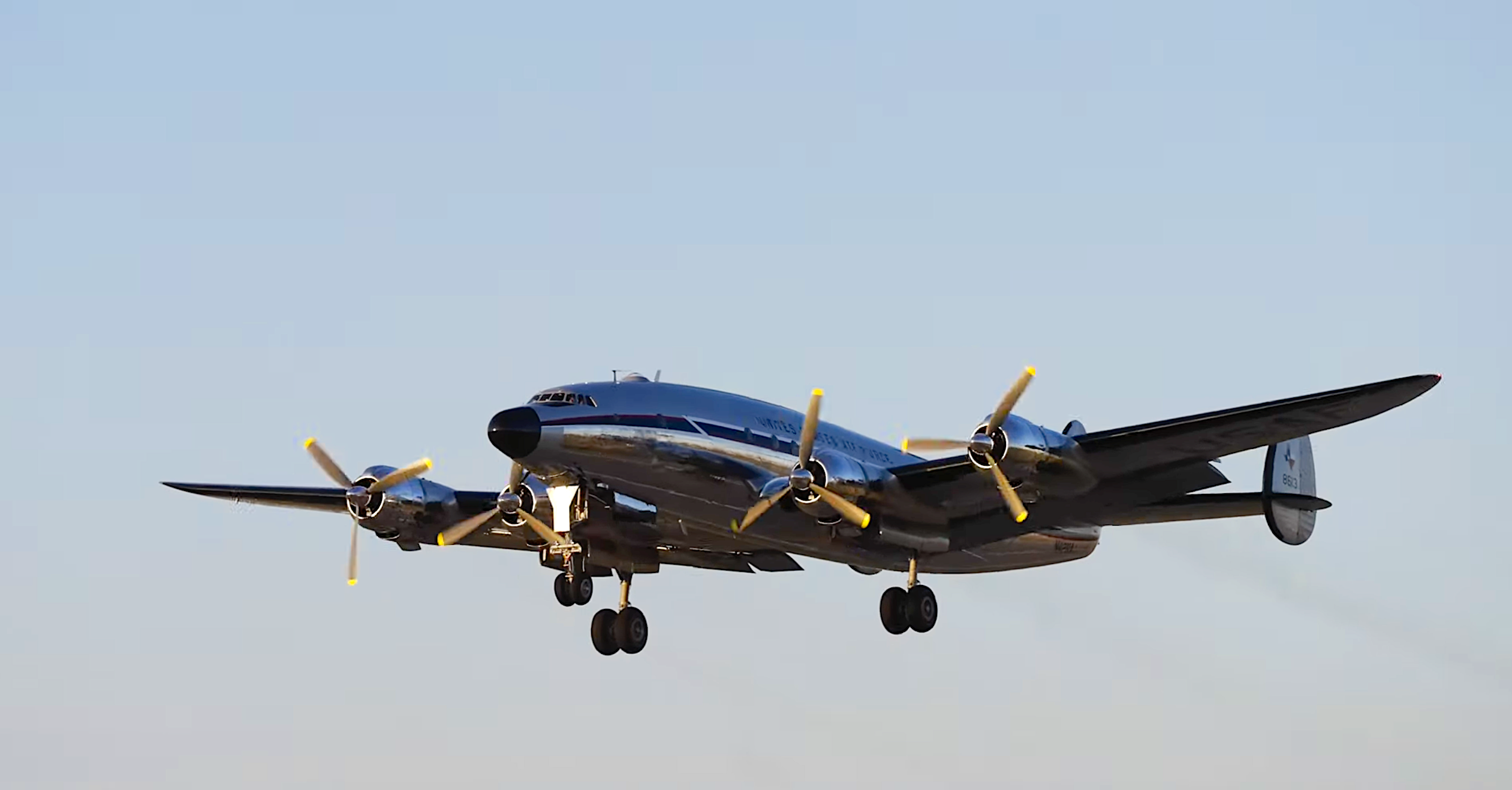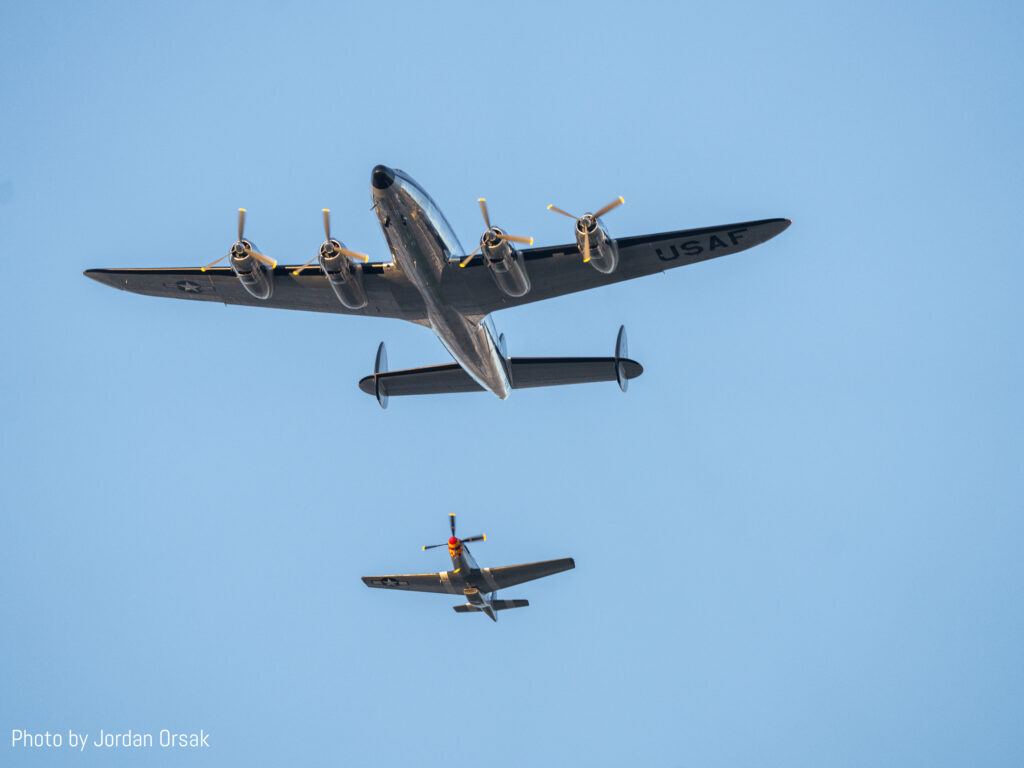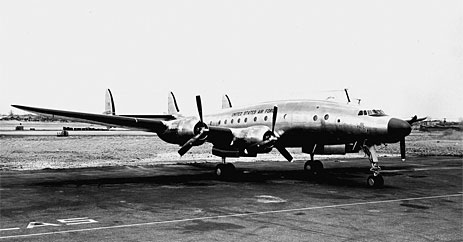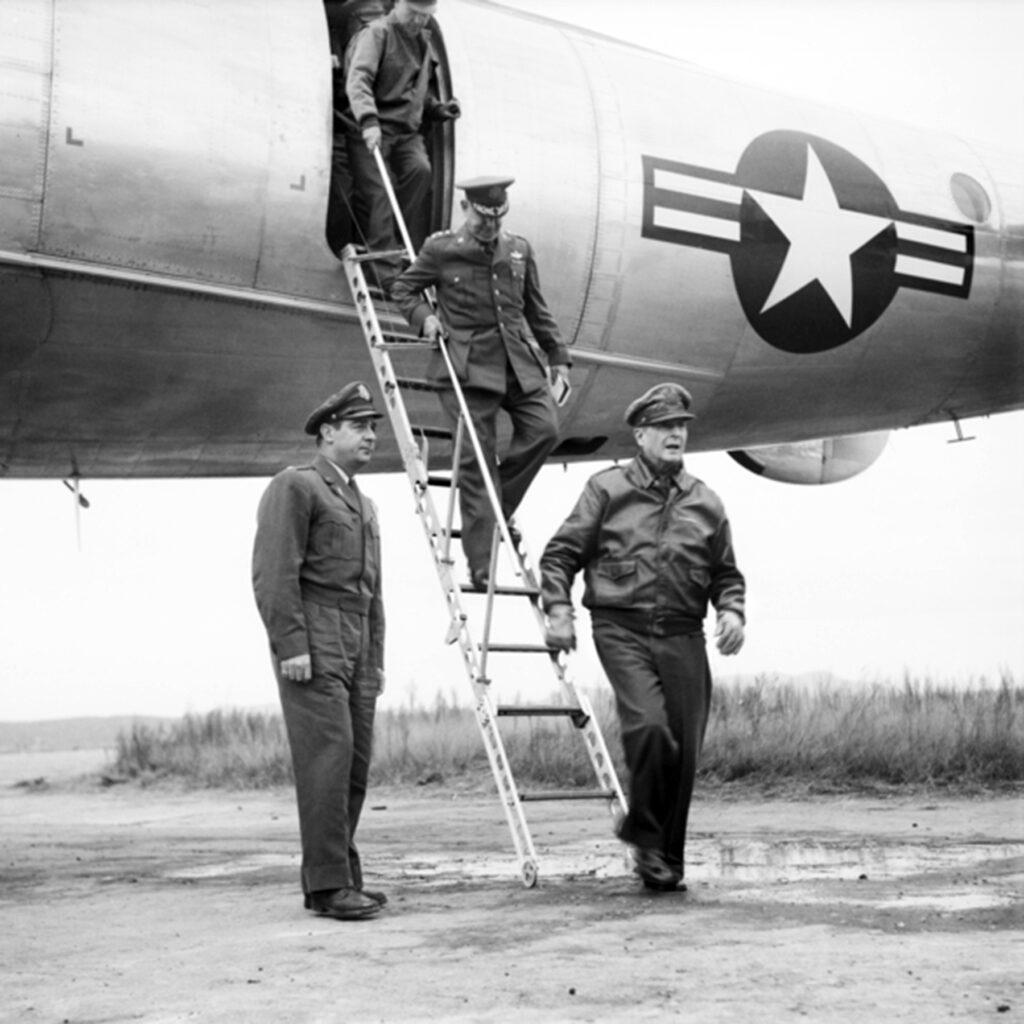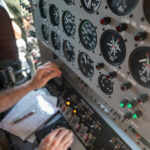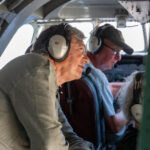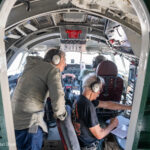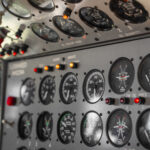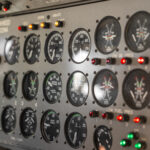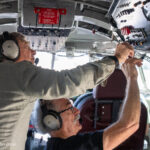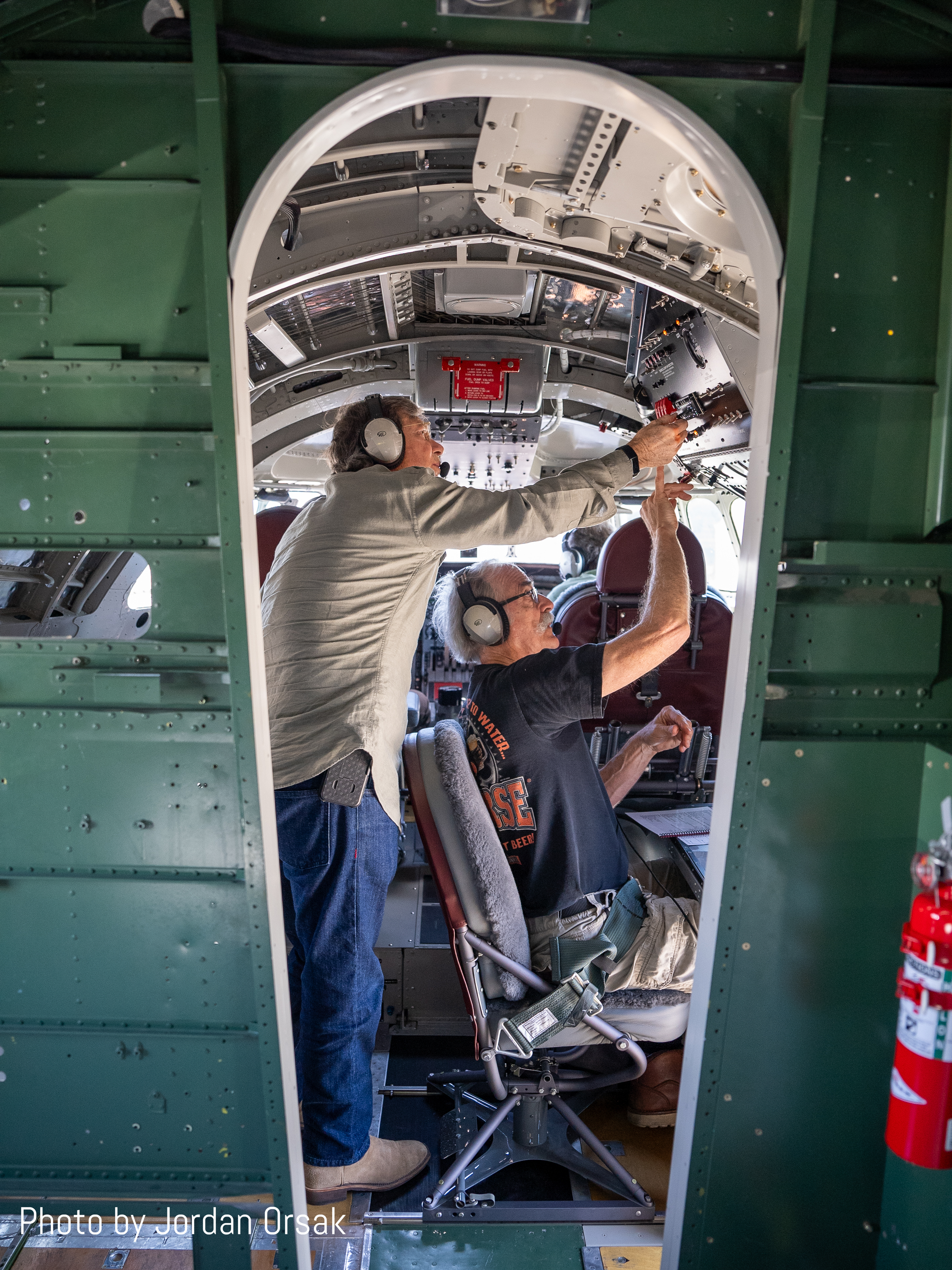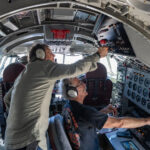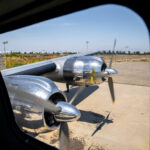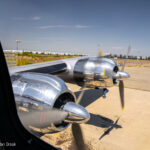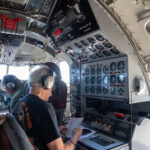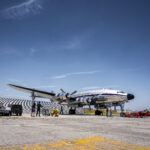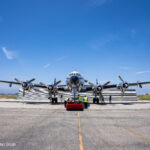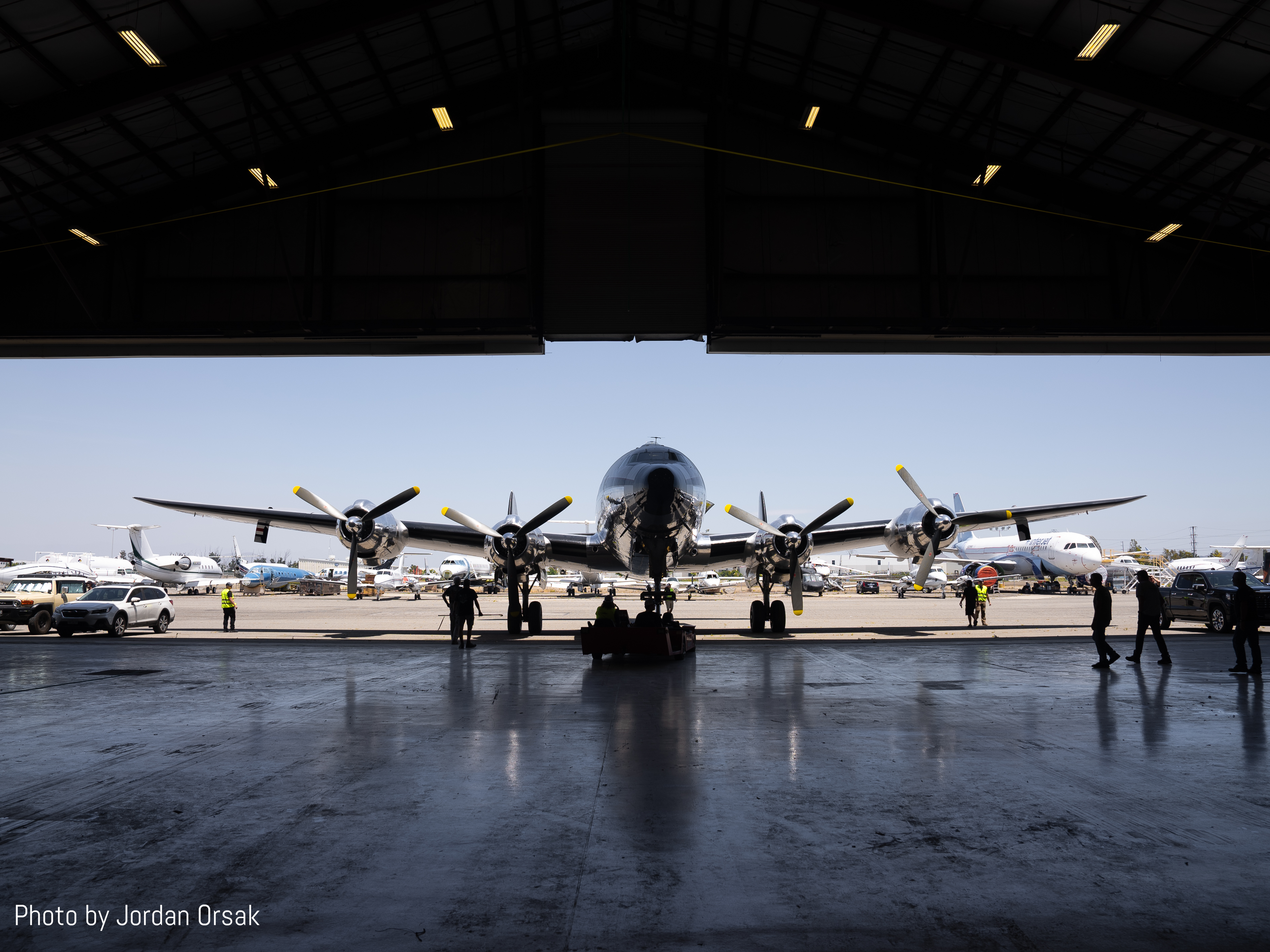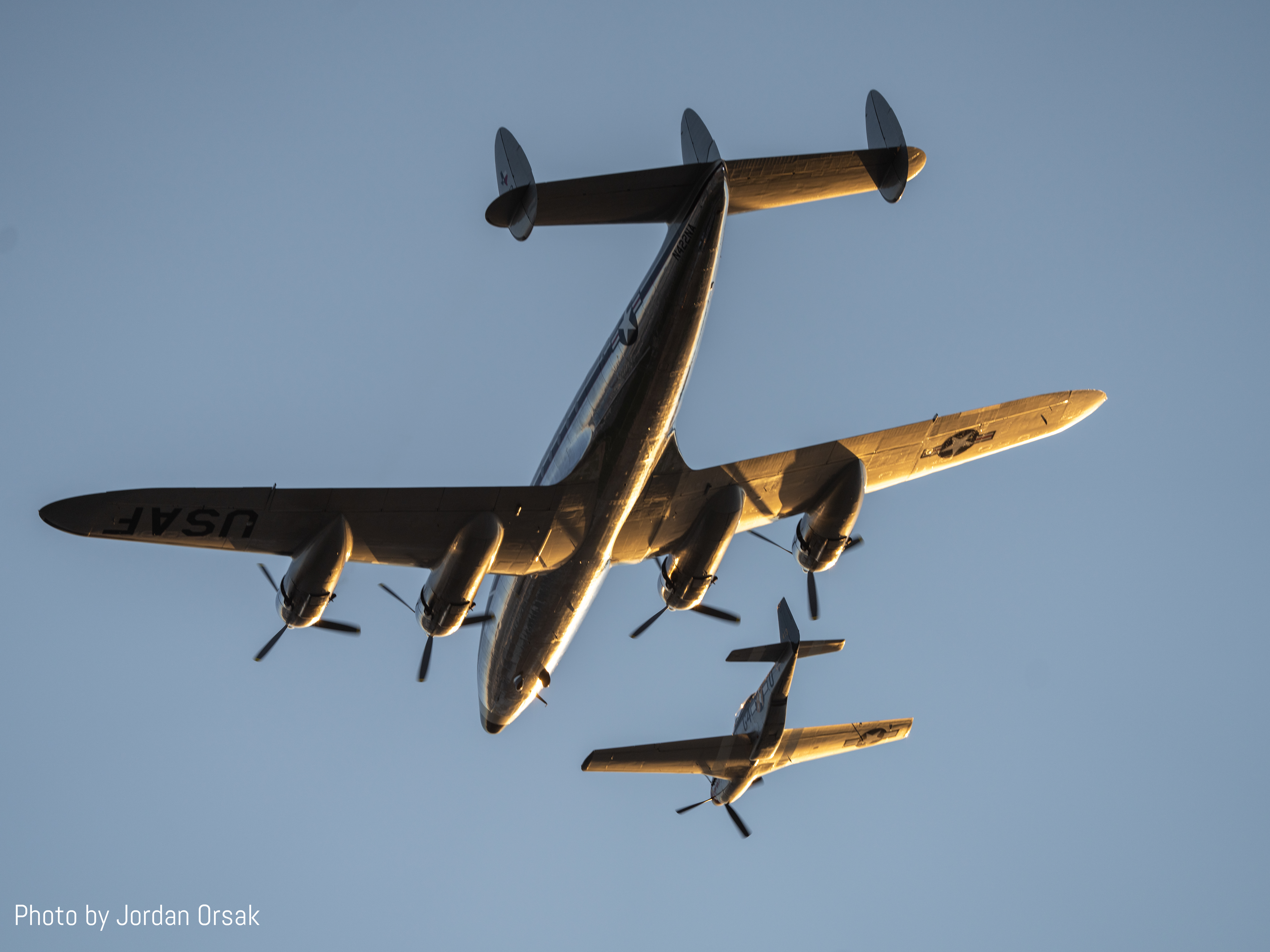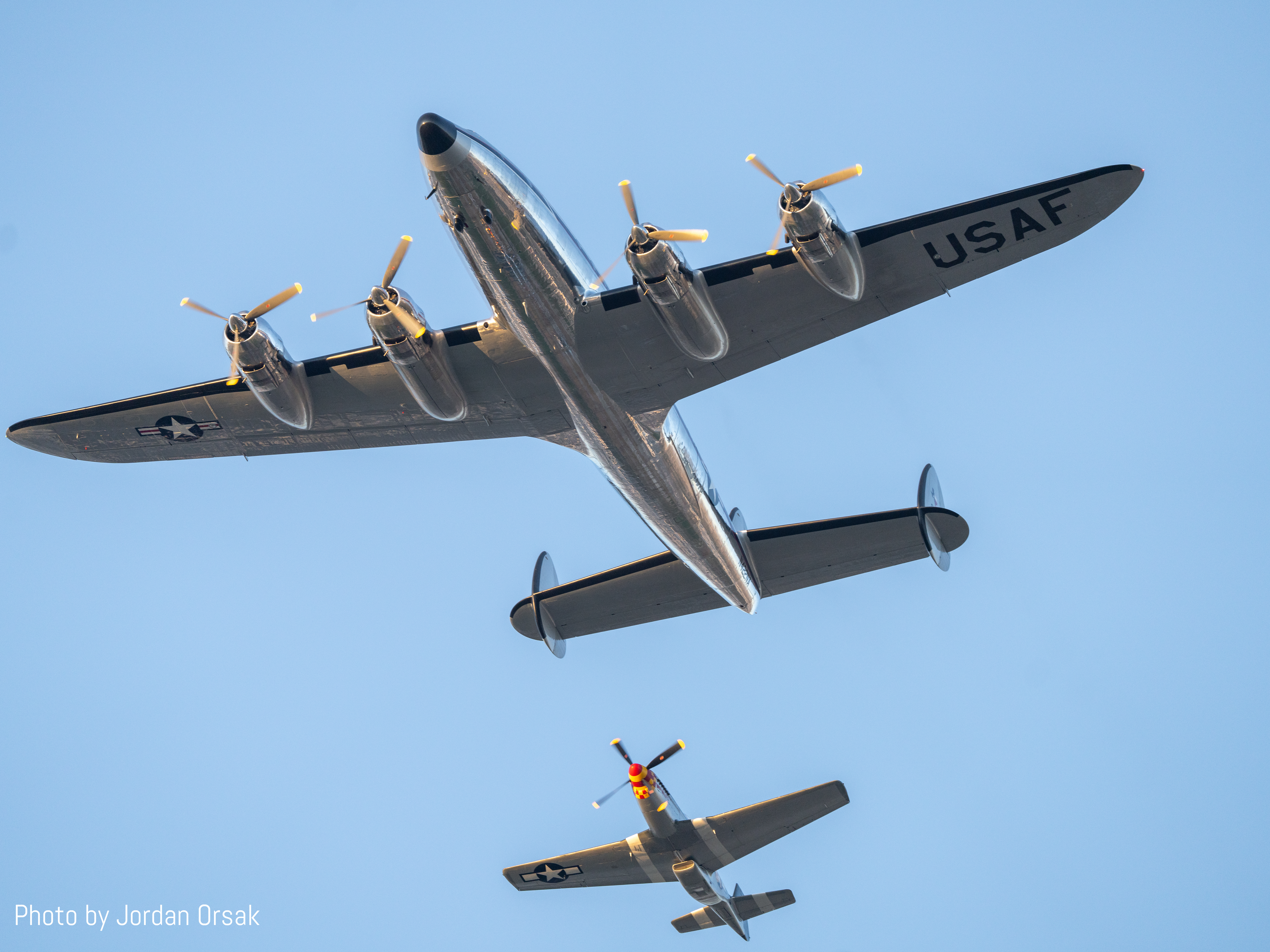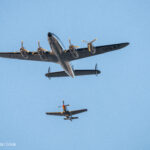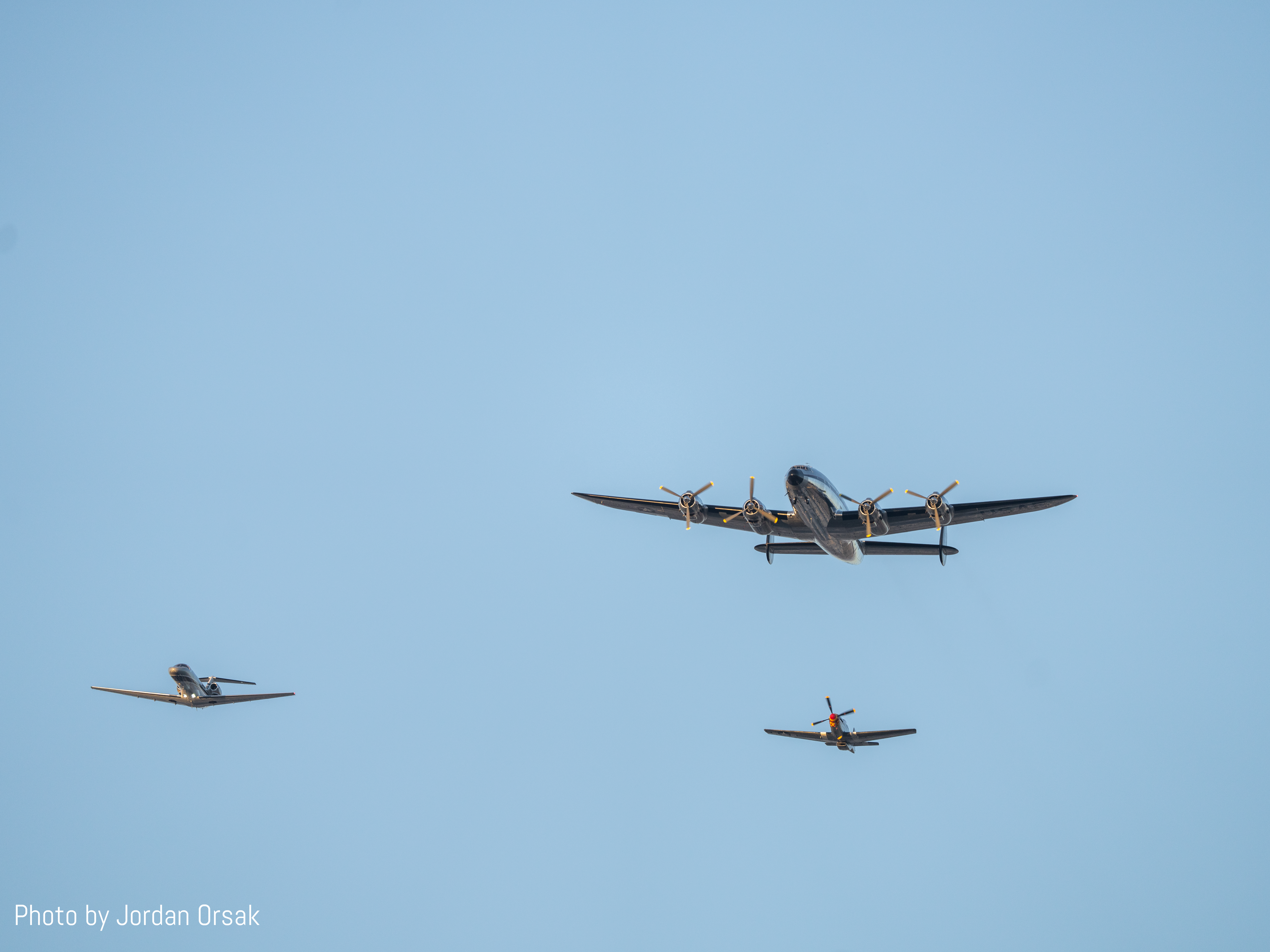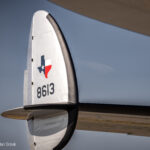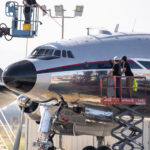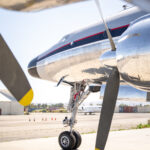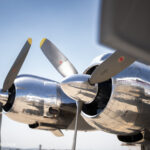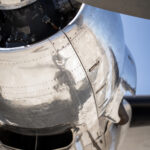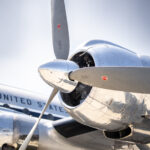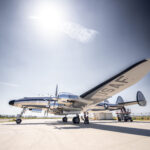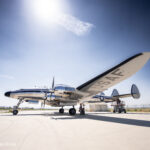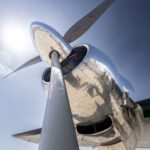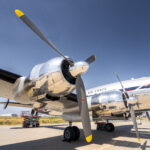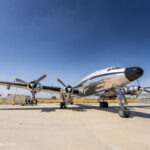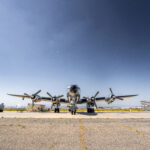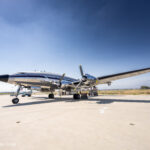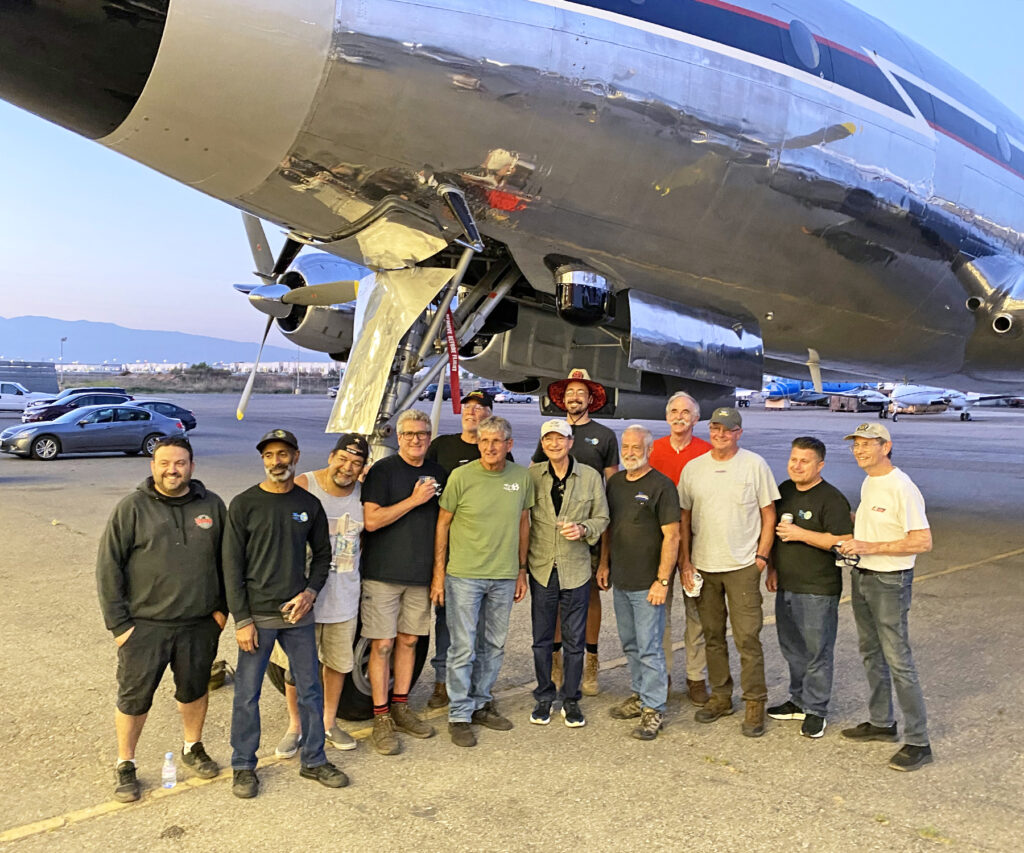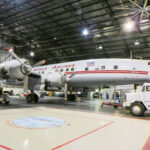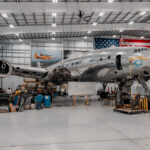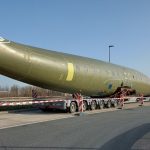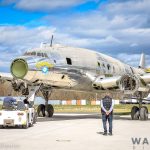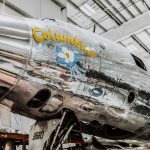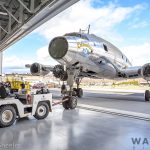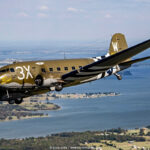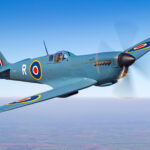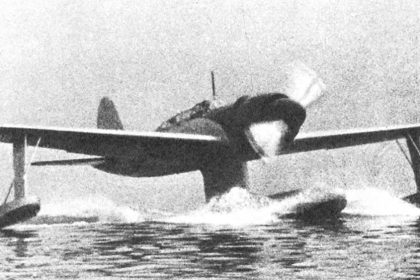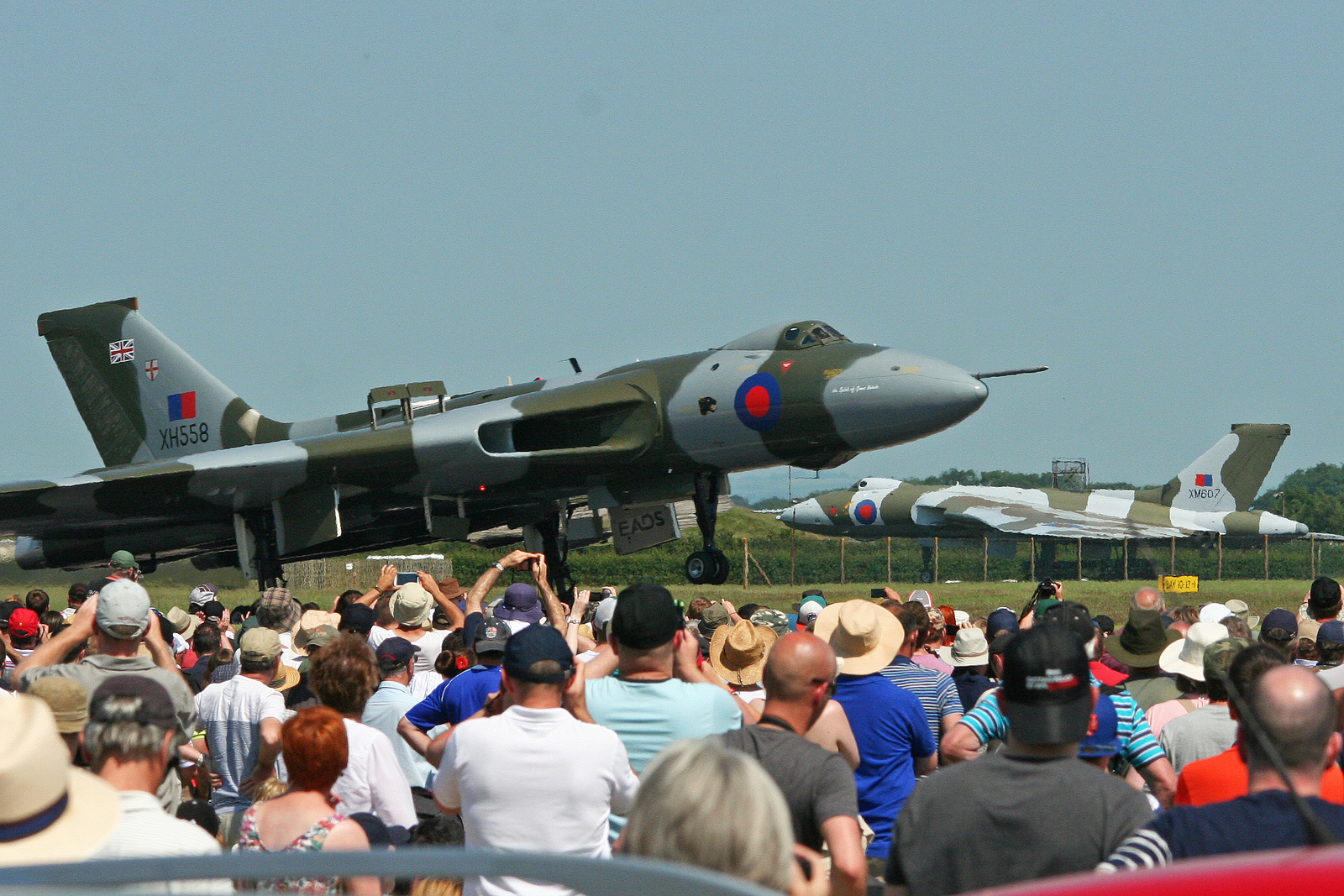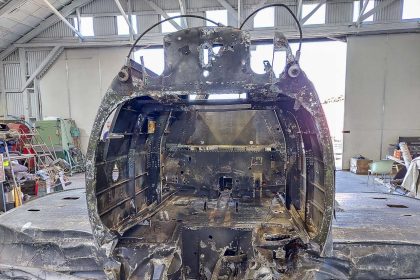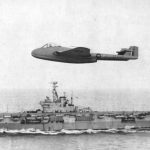by Adam Estes
On June 20th, Air Legends Foundation’s Lockheed C-121A Constellation took off on its first post-restoration flight from Chino Airport around 7:30 pm. The Connie’s crew was composed of experienced warbird pilots and restorers, Captain Stewart Dawson, first officer Steve Hinton, flight engineer Jeff Whitesell, safety overseer Jim “JD” Dale, and safety observer John Hinton made sure that the test flight was a success.
The Constellation that came to be known as Bataan started life as a C-121A, a militarized version of the L-749 Constellation, being delivered to the USAF in January 1949 for use within the newly established Military Air Transport Service (MATS). The C-121As differed from their civilian counterparts with the addition of a reinforced floor for carrying cargo and an aft cargo door in the rear fuselage. In practice, however, the C-121As would usually fly as personnel transports and were fitted with a total of 44 seats. During the Berlin Airlift, 48-613 was used to transport personnel and equipment from Westover Air Force Base in Massachusetts to Rhein-Main Air Force Base in West Germany.
With the conclusion of the Berlin Airlift in September 1949, 48-613 continued to perform routine missions until it was decided to convert the aircraft to become a VIP transport at Olmstead AFB, Middletown, Pennsylvania. Flown thereafter to the Lockheed factory in Burbank, California, it was the first C-121 to be equipped with weather radar and its engines were modified with turbines to recover exhaust gasses for use in the crankshaft to provide more power. From there, it was flown to Tokyo during the Korean War, where in September of 1950, it became the latest personal transport for General Douglas MacArthur, who christened it Bataan, after the Bataan Peninsula in the Philippines from which he had mounted his last defense of the archipelago against the Japanese invasion in 1942 until ordered by President Roosevelt to move to Australia. 48-613 would serve as a flying command post for MacArthur, and in it, he was flown to several bases in Korea to inspect UN forces, and in October 1950, Bataan flew General MacArthur to Wake Island in order for the general to meet with President Harry Truman about the current state of the war. MacArthur would even have his pilots fly him in Bataan and other transport aircraft to survey the battlefields below him. However, when the Chinese took up arms against the UN forces and forced them back across the 38th Parallel, General MacArthur publicly clashed with President Truman in the press resulting in the controversial relief of MacArthur from command. In April 1951, Bataan flew MacArthur and his family back to the United States, marking the first time that MacArthur had returned to the continental US since he arrived in the Philippines as a military advisor in 1935.
As for Bataan, it was taken over by MacArthur’s replacement, General Matthew Ridgeway, through to the armistice that ended the Korean War. It even had President Dwight Eisenhower and Vice President Richard Nixon onboard in the last days of the war when the newly elected President fulfilled his campaign promise to go to Korea and resolve an end to the conflict. After the war, it was assigned to the headquarters of Pacific Air Command at Hickam Air Force Base, Hawaii, flying various commanding officers across the Pacific, from Curtis LeMay, Mark Clark, and South Korean President Syngman Rhee. Bataan would serve the Pacific Air Command until being retired from active duty in 1965 and flown to Davis-Monthan Air Force Base in January 1966. Unlike many of her brethren, however, Bataan’s time in the Boneyard was not to be the final page in her story, for just six months later, it had become one of three Constellations employed by NASA for the Apollo space program, becoming NASA 422, with its VIP interior swapped for scientific instruments, but retaining its nose art, including a depiction of the eponymous peninsula and the flags of the countries it had visited. Though it was typically based out of Baltimore Friendship Airport (now Baltimore-Washington International Airport), the NASA Constellations were under the authority of NASA Goddard Center. The three Constellations would fly across the oceans to monitor and communicate with the Apollo astronauts during their monumental missions. But with the minimization of funding and interest after the success of Apollo 11, the NASA Constellations were decommissioned in 1970. Several museums had an opportunity to acquire Bataan from NASA, but it would be the US Army Aviation Museum at Fort Rucker, Alabama that would succeed in securing Bataan. On March 9, 1970, Bataan was flown to Fort Rucker by NASA pilots Melvin “Mel” Schmidt and William “Bill” Morgan, with Flight Engineer Carol “Bud” Weddington, There Bataan would remain, retaining its NASA paint scheme, until 1992, when the museum felt that it could no longer sufficiently maintain the old Constellation. If no one came to the aid of Bataan, it may well have faced the scrapyard.
Fortunately, Ed Maloney of the Planes of Fame Air Museum in Chino, California was able to secure Bataan from the US Army Aviation Museum. Starting in October of 1992, a team of mechanics from the Planes of Fame, local volunteers, and members of the US Army Warrant Officer Class 93-06 worked over the course of nine months to ready Bataan for the ferry flight to Dothan Airport, about 20 miles west to utilize the more extensive maintenance facilities. On June 23, 1993, after 23 years on the ground, Bataan roared back into the air after using nearly the entire length of the runway. Such were the concerns over the flight that the trees that had grown at the end of the runway were topped, and the fencing at that end removed. The flight went over smoothly, and at Dothan Airport, Pemco Aeroplex, Inc. stripped off the NASA paint scheme and painted Bataan back to the way it appeared as General MacArthur’s transport. There would be another stop on the way to Chino in Addison, Texas in May of 1994, where the interior was reproduced based on old photographs and drawings by Foster-Edwards Aircraft Company. Finally, on December 6, 1994, after a stopover in Avra Valley, Arizona, Bataan arrived in Chino, California. By this point, however, the Planes of Fame was opening a new auxiliary location, Valle Airport, located around 30 miles south of the Grand Canyon. Bataan became one of the first airplanes flown into the new location on April 27, 1995, and over the next 20 years, Bataan would welcome visitors from spring through autumn, who would be guided by local museum volunteers through MacArthur’s executive transport.
In April of 2015, however, a new chapter in Bataan’s storied history unfolded as the venerable Constellation was acquired by the Air Legends Foundation of San Antonio, Texas. Soon, Planes of Fame mechanics and pilots descended on Valle to ready Bataan for a ferry flight back to Chino for further restoration work. Their efforts paid off on January 14, 2016, when Planes of Fame president Steve Hinton gently nudged the throttles open and Bataan rose up into the winter Arizona sky, with snow covering the desert floor below. Later that day, Bataan arrived in Chino, and the work soon began. Hinton and other pilots and mechanics of Fighter Rebuilders worked on the wings, tail surfaces, engines, and wiring, and treated corrosion on a patch of the airport apron adjacent to the museum.
Then in 2021, Bataan was towed across the airport from the museum to a hangar across the airport for further restoration work. As is standard practice with many of Fighter Rebuilders’ projects, the latest work on Bataan was kept under wraps, until when in May 2023, Bataan completed its first engine runs.
Pending the successful series of test flights, it is hoped that Bataan will make its post-restoration appearance at EAA AirVenture 2023 in Oshkosh, Wisconsin. After that, Lewis Air Legends hopes to fly Bataan on the airshow circuit and considering the already impressive under Air Legends Foundation’s belt, from the last airworthy Douglas A-20 Havoc to the P-38F Lightning Glacier Girl, Bataan will be in good company.







